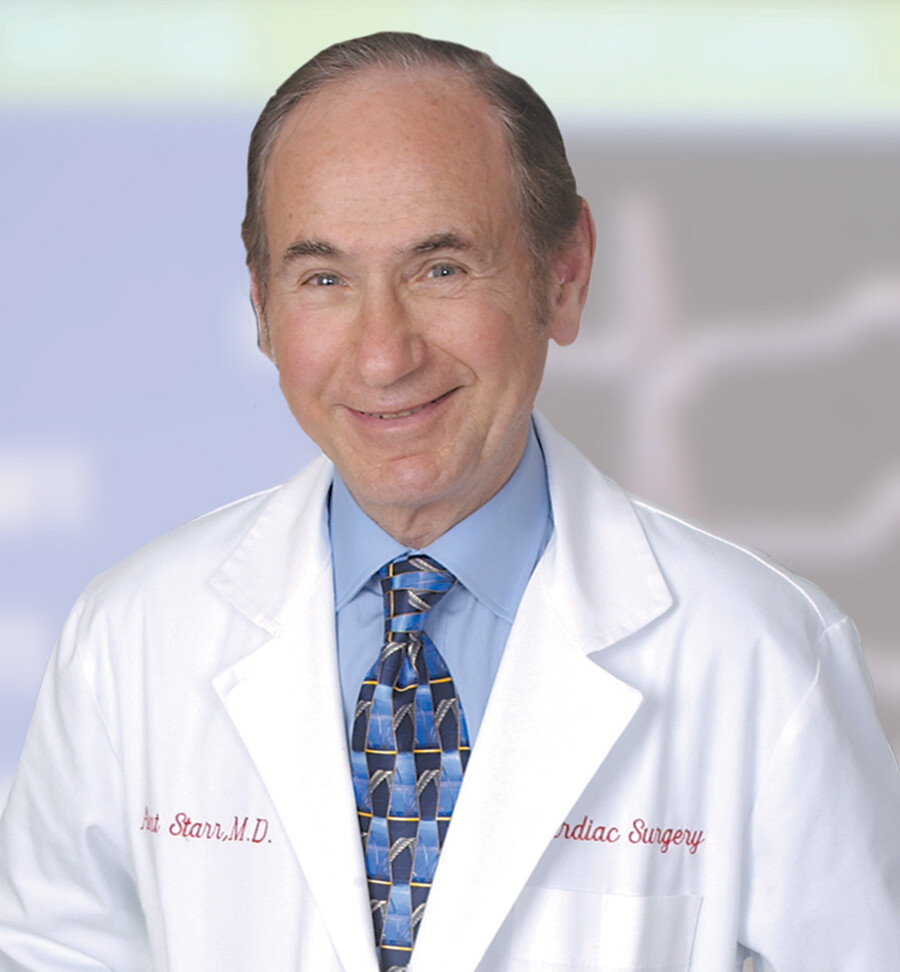News, articles, and interesting stuff from the College of Business

To celebrate the 2013 Weatherford Awards, this week we’re profiling each of the honorees here at the College of Business blog. Today is Dr. Albert Starr. For more information about the awards and links to other honoree profiles as they’re posted, check out our introduction to the series.
While all innovators have pressure to succeed, few work with the possibility of actually saving a life with their inventions.
Those were the stakes for Dr. Albert Starr just more than 50 years ago as he and co-creator Miles Lowell Edwards developed the first artificial heart valve.
On September 21, 1960, Dr. Starr and his surgical team successfully implanted the first heart valve. Since the valve’s first use, heart valve replacement surgery has saved millions of lives, giving hope to those with heart disease.
“Up until that point those patients were doomed to progressively worse heart failure, medication and spiral toward death,” heart surgeon Dr. Jeffrey Swanson told the Portland Business Journal in 2000.
Today, life-saving heart valve replacement surgery is performed 300,000 times each year around the globe, with more than 90,000 of those operations taking place in the U.S.
“Valve replacement turned the corner of cardiac surgery enormously,” Dr. Starr said. “It was the first implantable life sustaining cardiac device. And before that we were nibbling around the outside of the heart but nothing was put inside. This was the first life sustaining device.”
Dr. Starr came to Oregon in 1958 after graduating from Columbia College (now Columbia Univeristy) in New York. Soon after Dr. Starr was approached by Edwards, a retiring mechanical engineer, about the possibility of creating an artificial heart.
Dr. Starr, seeing an entire heart as too much for their first attempt, suggested the smaller but still never-accomplished task of an artificial heart valve.
Just two years later, after an exhaustive testing and selection course, Dr. Starr performed the first of thousands of valve implantation surgeries.
“I’ve done 8,000-9,000 heart surgeries during my career,” Dr. Starr said. “Actually, at one time I had callouses on my fingers from handling instruments all of the time.”
That drive has kept Dr. Starr a pioneer in the field. In 2007 he was named a winner of the Albert Lasker Award for Clinical Medical Research.
Even today, 50 years after his initial breakthrough, Dr. Starr continues to push for innovations in treatment.
Recently he took on a new role at OHSU. A historic $125 million gift from Nike founder Phil Knight and his wife Penny established the OHSU Knight Cardiovascular Institute and Dr. Starr and Dr. Sanijiv Kaul were chosen to lead the Institute that will bring clinicians and researchers together to take lab discoveries and turn them into new treatments for heart disease.